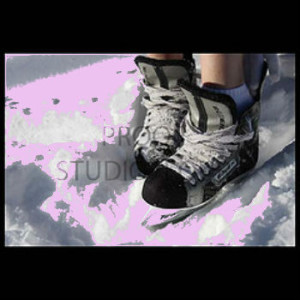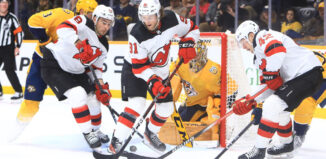Is it Possible to become a Player this Late in the Game?
 In the recent months, we’ve been adding some fantastic women to the Pink Puck roster of writers. Some of the ladies have played, others have watched and a few are still looking to get onto the ice. If you’re new to the site, we wrote an article with tips to get yourself out on the ice last May, well we thought we’d recycle it in the hopes it would inspire a few more women to stop cheering and start playing…
In the recent months, we’ve been adding some fantastic women to the Pink Puck roster of writers. Some of the ladies have played, others have watched and a few are still looking to get onto the ice. If you’re new to the site, we wrote an article with tips to get yourself out on the ice last May, well we thought we’d recycle it in the hopes it would inspire a few more women to stop cheering and start playing…
Is it possible to become a player this late in the game?
For some, you’ve known how to lace your skates long before you could tie your shoes. For others, lacing, tightening or even putting on a skate is a daunting thought. Passion is often lumped with desire and if you’re passionate about something the time may come when you have the desire to try it.
The moment you decide to cross the blue line is a beautiful thing.
Once you’ve made the decision to play, it can be both exciting and terrifying. Don’t let the fearful thoughts take center ice, give them a good slash and place them in the penalty box.
Being a fan of the game is half the battle, the other half is finally getting on the ice.
Research: The internet is your best resource for getting in the game.
If you’ve only ever worn figure skates, find out the public skating times for your local rink and give hockey skates a try. Learning to “hockey stop” can be quite the adjustment, don’t be afraid to use the boards as a stopping point. Chances are you won’t be skating at NHL speeds and any contact with the boards probably won’t be a dangerous one.
If you’ve never skated before, a lot of rinks have Adult Learn to Skate programs. If that’s just not a feasible option, the above method will work too. Public ice times are the best and usually inexpensive. Use the boards to your advantage or as a crutch until you get comfortable. Every few laps, distance yourself a bit more, eventually you’ll find that you won’t need them.
Next up is finding a program that fits you. Similar to the Adult Learn to Skate programs, many rinks are now offering Adult Learn to Play programs as well. These programs are usually offered at different levels from beginner to intermediate and are often coed at the beginning levels. If the thought of learning to play hockey with the guys is out of the question, don’t fret. Many rinks offer female specific programs that sometimes segway into leagues upon program completion.
If a program isn’t being offered in your area and you can’t wait til’ one skates into town, try public hockey. Many rinks are realizing the demand for hockey in the public format. Public hockey can take on many forms depending on how many people show up. These ice times can range from shooting the puck around alone, or a scrimmage with 10 people. It’s a great opportunity to meet other players who are just learning, and you might receive some tips from your peers. Public hockey is very back to basics, anything goes. It’s a lot easier to not feel silly if you mess up, when it’s an anything goes sheet of ice.
Cost: Until you know you love to play, don’t go out and buy top of the line.
It’s no secret that ice hockey isn’t the cheapest sport to play. The good news is, joining a program as an adult is a little less costly. You’re already an adult, so you aren’t growing. Chances are you’ll be able to use the same equipment for a very long time. Try to borrow equipment for your first few times on the ice. If you don’t know any other women who play, perhaps a friend or family member has a teenager who does. Not all women are built equally, and this might not be an option for everyone; but many pieces of women’s equipment are equivalent in size to a juniors. Try it before you buy it, if you can.
If you can’t borrow, other cost efficient options are available. Yard sales, thrift stores and stores that specialize in re-selling used equipment exist. Large chain hockey stores also have basement bargain deals, with past seasons styles at discounted prices. As the hockey season winds down, as in right now and the coming months, many teams have equipment sales to clear out the locker room. These “fire sales” are a great way to get nice equipment at even nicer prices! Buying equipment doesn’t have to leave a dent in your wallet.
Equipment Specifics: While buying most equipment used is fine, there are a few pieces that shouldn’t be skimped on.
Skates: These are obviously your greatest tool, choose wisely. At first you might hate them, but once they’re broken in they’ll be your best friend.
Gloves: Make sure that they fit you, like a glove. Your overall play will benefit from having a glove that’s comfortable.
Stick: For a non hockey player, a stick is just a stick. For a player, it’s so much more. As a beginner, you can use pretty much any stick. However, the more you play the more important your stick becomes. When it comes to the title best friend, your stick and skates will do battle. Having a stick that you know inside and out will be a huge benefit. Try a few different styles, but when you know it’s “the one”, you know. Promise!
If you have the passion to play, now’s the time to get out on the ice! Playing the game gives watching it a whole new dynamic. What better way to spend the off-season than learning to play in your own season. Hockey, it’s a girl thing.













